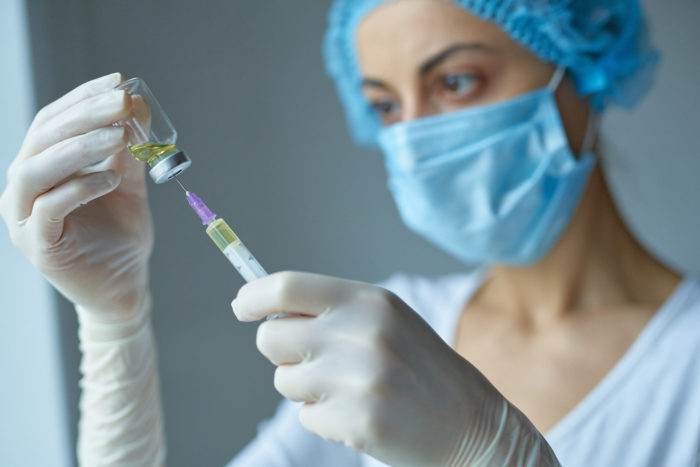The Vaccine Race
May 29, 2020
The search for a COVID-19 vaccine is advancing at full speed, fueling hope for the discovery of a workable drug in record time.

More than 100 vaccine efforts are underway, with 10 candidates in clinical trials, according to the World Health Organization. Experts say that at least a handful of those vaccines have a reasonable likelihood of success. One potential vaccine generated excitement when, on May 18, the biotechnology company behind it announced that trial participants had exhibited antibodies in response to the drug. The finding suggests that the vaccine provides at least some level of immunity.
Though more testing is needed, for this candidate and others, the progress offers hope to many. But defeating COVID-19 requires more than just finding a vaccine. It requires widespread access.
Misinformation & Vaccine Hesitancy
In some scenarios, that means overcoming vaccine misinformation. Herd immunity – where enough people have immunity to prevent the virus from spreading in the community – would effectively end the pandemic. That requires at least 50% of the population to become immune either by vaccination or natural infection.
But building immunity through vaccination is no small effort. As context, just 37% of American adults got a flu vaccine in 2017-2018, though it was a historically severe flu season.
Meanwhile, anti-vaccine websites have already begun spreading misinformation and conspiracy theories about a coronavirus vaccine. A recent national survey found that only about half of Americans plan to get one.
Manufacturing & Distribution
People who do elect to receive a vaccine pose another set of challenges. Policymakers must answer tough questions about how to secure enough doses, how to get the vaccine to patients and who will be first in line to receive them.
Both public and private entities are paving the way for production. Biopharmaceutical companies are already ramping up manufacturing capabilities to get a running start on producing vaccines once they gain FDA approval. The Trump administration, meanwhile, has committed up to $1.2 billion to produce at least 300 million doses of a vaccine under development by Oxford University.
That leaves questions of distribution. The CDC’s Advisory Committee on Immunization Practices and the WHO’s Strategic Advisory Group of Experts on Immunization are currently working on plans for how to distribute a vaccine. Their decisions will be based on factors such as what kind of vaccine is available, how well it works in different demographic groups and the severity of the contagion.
Approaches vary. In some situations, distributing the vaccine in geographical areas with high disease prevalence is the best way to slow infections. In other cases, targeting specific populations, such as health care workers, the elderly, and people who are medically vulnerable, works best.
Rapid vaccine progress is encouraging for people and economies across the globe who are struggling during COVID-19. The unprecedented effort underscores the power of public-private partnerships to find innovative solutions – and it pushes policymakers to support widespread access to save as many lives as possible.
Categorized in: Blog

